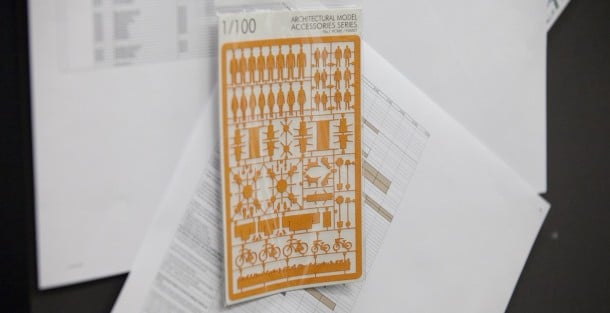Why we need feminism – Neph Wake does the numbers.
According to family lore, the first time I was described as a feminist I was young enough to be sitting in a stroller, so perhaps it’s inevitable that I’ve grown up to write a piece like this. Despite this auspicious beginning, I am struggling to articulate exactly why, as a late 20s final year architecture student, I am prepared to write about the role of women in a profession that I might, one day, maybe, perhaps, aspire to join. Or not. And the best I can do is this: I count.
Not in a metaphorical, self-affirming sense, but literally. More specifically, I count women in architecture. I count the number of speakers at a conference who are women. I count jury members who are female. I count the proportion of entrants and prize-winning women. I count the number of women on a project team. I count the number of women teaching building and technical subjects. I count the number of female architects I do not know personally but whom I can name in under a minute without Google. Then I count those whose work I know independently of their male colleagues or partners. I count quickly, because the numbers are embarrassingly low.
I count the number of times I see the title ‘architect’ preceded by ‘female’. I celebrate ‘equal pay day’ at work. I calculate the average number of hours of housework that women do across the week and how much time not ironing can save. I measure the (future) cost of motherhood in lost opportunities, childcare fees and dated skills. I total the number of my female friends anxious to register before having children, worried that they will otherwise not get the opportunity. I count those on the periphery of practice – the editors, critics, academics, tutors, building designers, consultants, public servants, thinkers and allies – and detect patterns in the gender split. I observe the number of times an idea is magically more agreeable when repeated five minutes later by a male colleague. I notice who is invited to speak, who is interrupted and who interrupts. I tally the number of women in meetings, committees and teams. This takes very little time when, for example, a 42-person technical meeting features just one other woman – who, despite the whole blonde ponytail/short dark hair thing and a height difference of a foot, had the misfortune of being repeatedly confused with me. And after counting, I notice the patterns. Because in the field of architecture, while people as individuals may be very happy with their decisions, women as a group are doing some interesting things compared to men as a group. Or more precisely not doing some things, such as becoming prize-winning, firm-directing, internationally lionised doyens of architecture in large numbers. Which leads us to ‘the F-word’.
My mother explained feminism to me as follows: feminism is many things to many people but mostly it is about creating a society where choices and opportunities are not restricted by gender. Feminism is about making life easier and fairer for everyone, at work and in the home. It means that the new dad and engineer of my acquaintance who announced he’d now be working 4 days a week, shouldn’t have had to explain why he wanted to do this or console envious (male) colleagues who wished they’d done the same. Feminism means recognising that women might do ‘it’ differently, but ‘it’ still gets done. It means acknowledging that the history of our profession has shaped a set of obsolete expectations and norms that don’t work particularly well for anyone anymore. Feminism means celebrating diversity, seeking balance, negotiating compromises and changing culture and expectations.
I am delighted to hear that many people think feminism is irrelevant. That’s fantastic. I hope this website is utterly useless. Because that means you’ve been lucky enough that you have never felt that your gender limited or hindered you in anyway. But it might also mean that you made it through university where the women were doing well, thank you very much, and surely it’s just ‘a matter of time’ until women’s representation magically equalises. If you’ve ever worried that you don’t get to spend time on site or wondered why you just can’t seem to employ women at the same rates or suspect you might experience ‘late-onset feminism’ as a byproduct of children or remember the last time we talked about women in architecture, then we still need sites like this. Welcome to Parlour.






















2 comments
Dashers Mistress says:
May 23, 2012
Beautifully put!
OOF architecture says:
Oct 23, 2012
I also love to count and notice women’s work in the industry. Not because we’re delicate flowers in need of special attention but because there’s still so few – it’s easy to notice! As you say, the gender balance has not / will not magically equalize without effort. Thanks for a practical wake-up call.